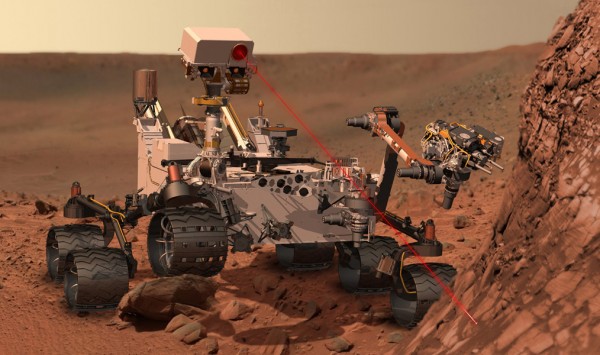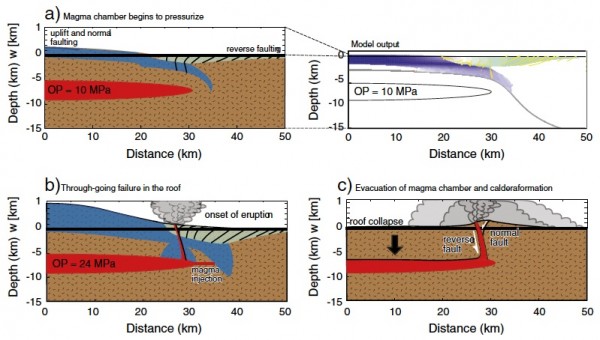At approximately 10:31 PM PST, August 5th 2012, the dune buggy-sized Curiosity rover touched down gently onto the surface of Mars, culminating a series of amazing engineering achievements. Once tests of the rover’s systems are completed Curiosity will begin its traverse toward the kilometers tall central peak mound within Gale crater, searching within the strata for new insights into the complex climatic development of the red planet and assessing the astrobiological implications.
Follow the science action over the coming months at http://mars.jpl.nasa.gov/msl/
To see an amazing rotatable 360 panorama of the landing site (view from the rover), including some awesome layering, click here.

— rover at work (image credit: NASA/JPL)
Posted in Uncategorized | Comments (0)
In a 2012 Journal of Volcanology and Geothermal Research paper, colleagues Patricia Gregg, Shan de Silva, John Parmigiani (all at Oregon State University) and I present our analysis of the volcanic conditions needed to form a large caldera (e.g., Long Valley, CA). Supereruptions associated with large caldera growth have caused regional- to global-scale devastation regularly throughout Earth’s recent geologic history, and improving our understanding of how such events occur is thus of obvious societal concern.
Utilizing new temperature-dependent, viscoelastic finite element models that incorporate a Mohr-Coulomb failure criterion, we show that eruptive failure of the largest magma chambers is a function of the geometry of the overlying roof and the location of the brittle-ductile transition. As magma pressure increases within a candidate magma chamber, extensive uplift of the overlying roof promotes fault propagation that can trigger caldera subsidence and lead to supereruption. Our thermomechanical models also provide an estimate of the maximum size of magma chamber growth in a pristine host material and, thereby, an estimate of the maximum size of the resultant caldera.
For more information: Catastrophic caldera-forming eruptions: Thermomechanics and implications for eruption triggering and maximum caldera dimensions on Earth
Students: Want to get involved in caldera research?

— Sketch illustrating thermomechanical models of caldera and eruption initiation (Gregg et al., 2012)
Posted in Publication, Research | Comments (0)

